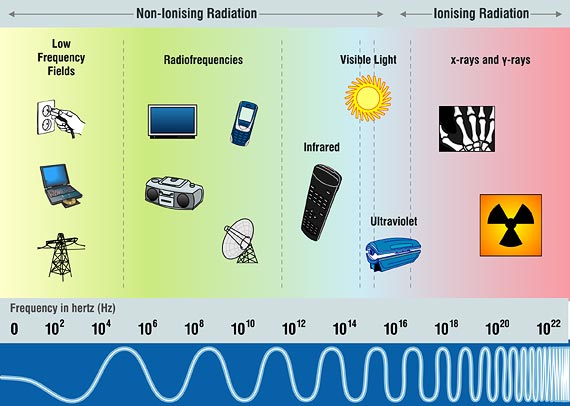» 1.0 Initial » Test perception
Perception of risk by population
That perception has the population about the risks of electromagnetic radiation?
What precautionary measures, or preventive, takes the population to minimize the effects of electromagnetic radiation?
Several factors count for the formation of the opinion of the population about the risks of electromagnetic radiation.
Official authorized levels, until today, are based only on the thermal effects of the electromagnetic radiation.
The current legislation does not consider the non-thermal effects, or biological, of the same electromagnetic radiation of technological origin.
However, thousands of in-vitro studies, epidemiological and medical, based in non-thermal effects, or biological, consider the evidence of the development of diseases resulting from the proximity of electromagnetic fields of technological origin,both by use of electricity and the use of wireless communication systems.
Nevertheless, because it is an invisible influence, disperses, confluent and interactive with a multitude of other environmental factors and lifestyle,becomes moot the cause-and-effect relationship of these technological radiation.
Most of the recommendations of these studies is preventive in nature, because obviously you can't have immediate legislative reach.
However, are significant recent recommendations of the European Parliament and of the Council of Europe, referred to in this website, in which it calls for a thorough review of the levels of electromagnetic radiation of technological origin until today.
In these official documents, which correspond to the policy at the highest level in Europe,it is recommended the "precautionary principle", as most of the scientific studies in vitro, doctors and epidemiologists.
Joins a recent study, in Portugal, on the perception and acceptance of risk on the part of the population.
Official authorized levels, until today, are based only on the thermal effects of the electromagnetic radiation.
The current legislation does not consider the non-thermal effects, or biological, of the same electromagnetic radiation of technological origin.
However, thousands of in-vitro studies, epidemiological and medical, based in non-thermal effects, or biological, consider the evidence of the development of diseases resulting from the proximity of electromagnetic fields of technological origin,both by use of electricity and the use of wireless communication systems.
Nevertheless, because it is an invisible influence, disperses, confluent and interactive with a multitude of other environmental factors and lifestyle,becomes moot the cause-and-effect relationship of these technological radiation.
Most of the recommendations of these studies is preventive in nature, because obviously you can't have immediate legislative reach.
However, are significant recent recommendations of the European Parliament and of the Council of Europe, referred to in this website, in which it calls for a thorough review of the levels of electromagnetic radiation of technological origin until today.
In these official documents, which correspond to the policy at the highest level in Europe,it is recommended the "precautionary principle", as most of the scientific studies in vitro, doctors and epidemiologists.
Joins a recent study, in Portugal, on the perception and acceptance of risk on the part of the population.


LOJAS ONLINE
Geohabitat (c) 2009
Desenvolvido por FNet - Desenvolvimento de Software


 Imprimir
Imprimir


